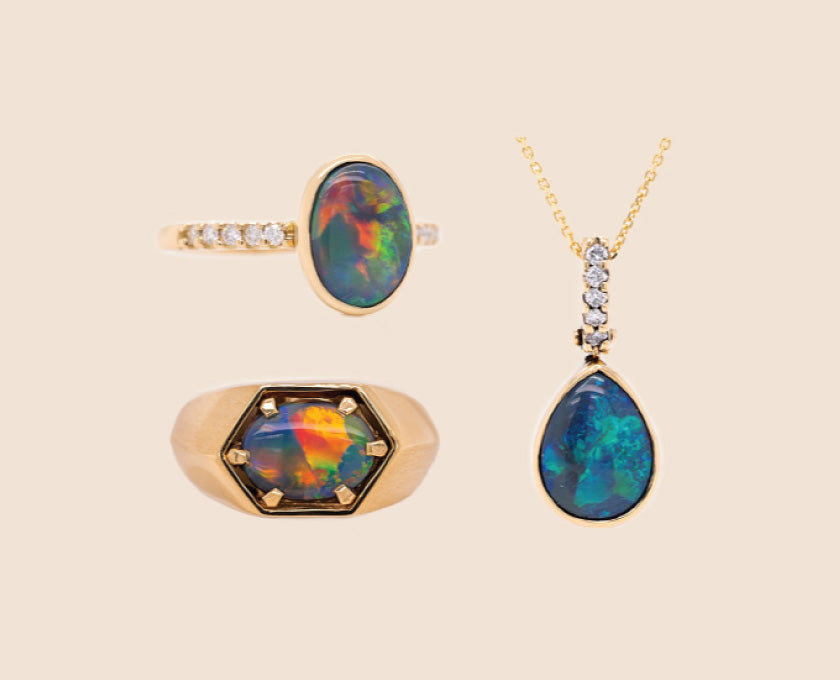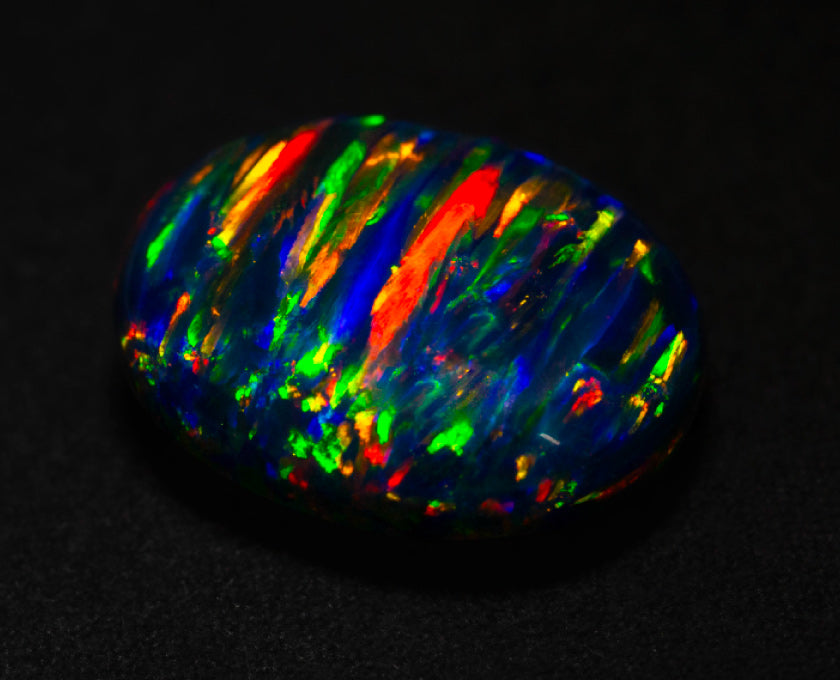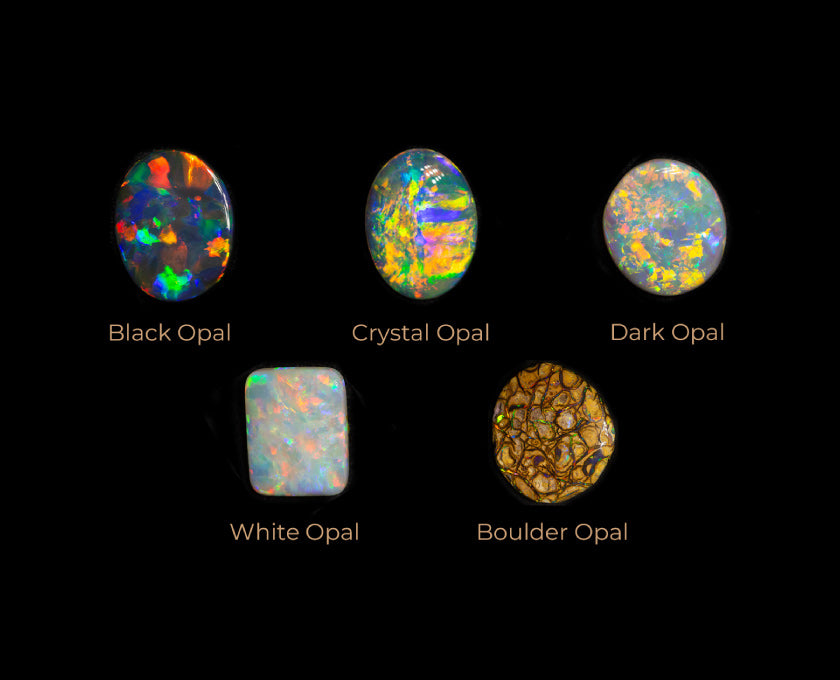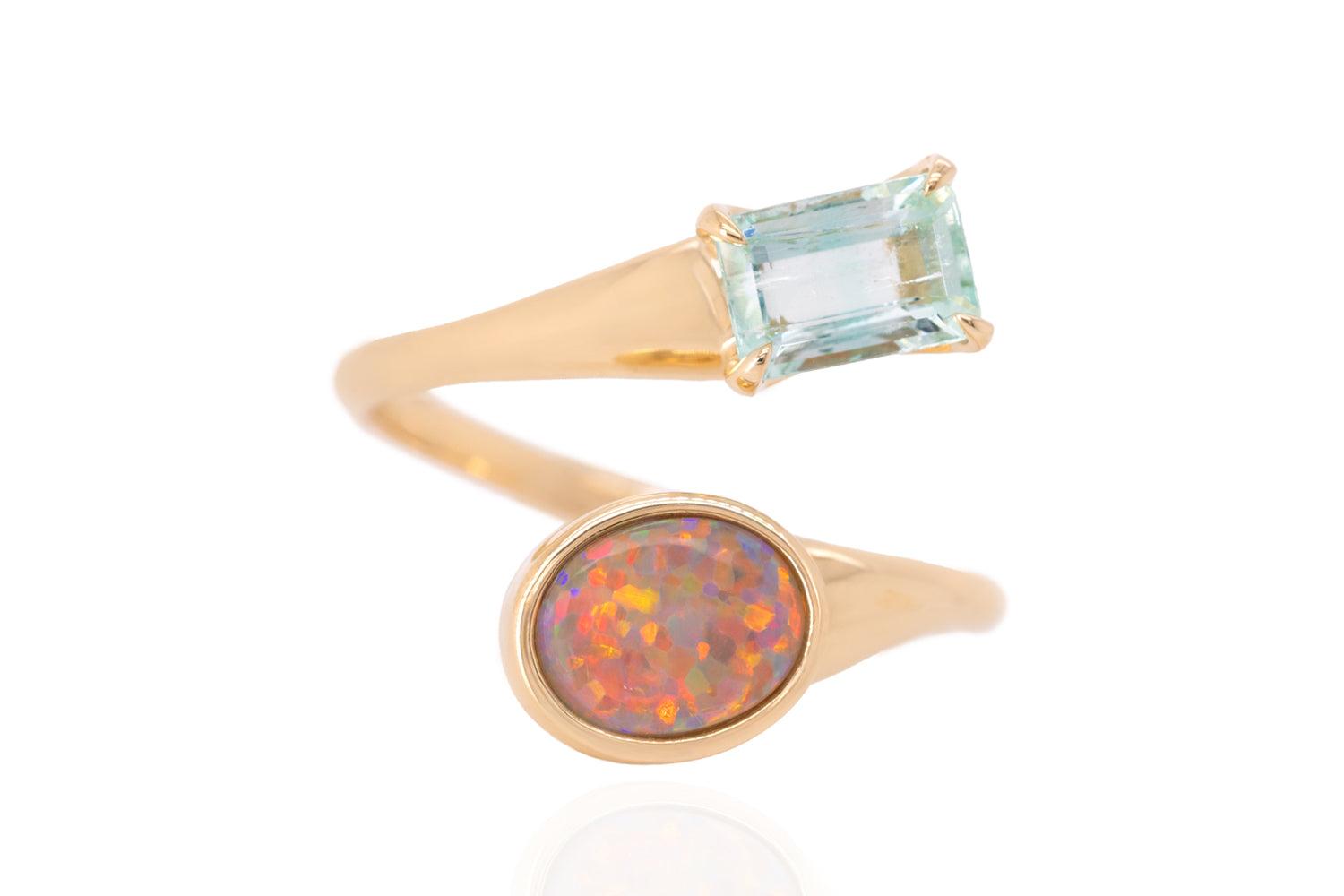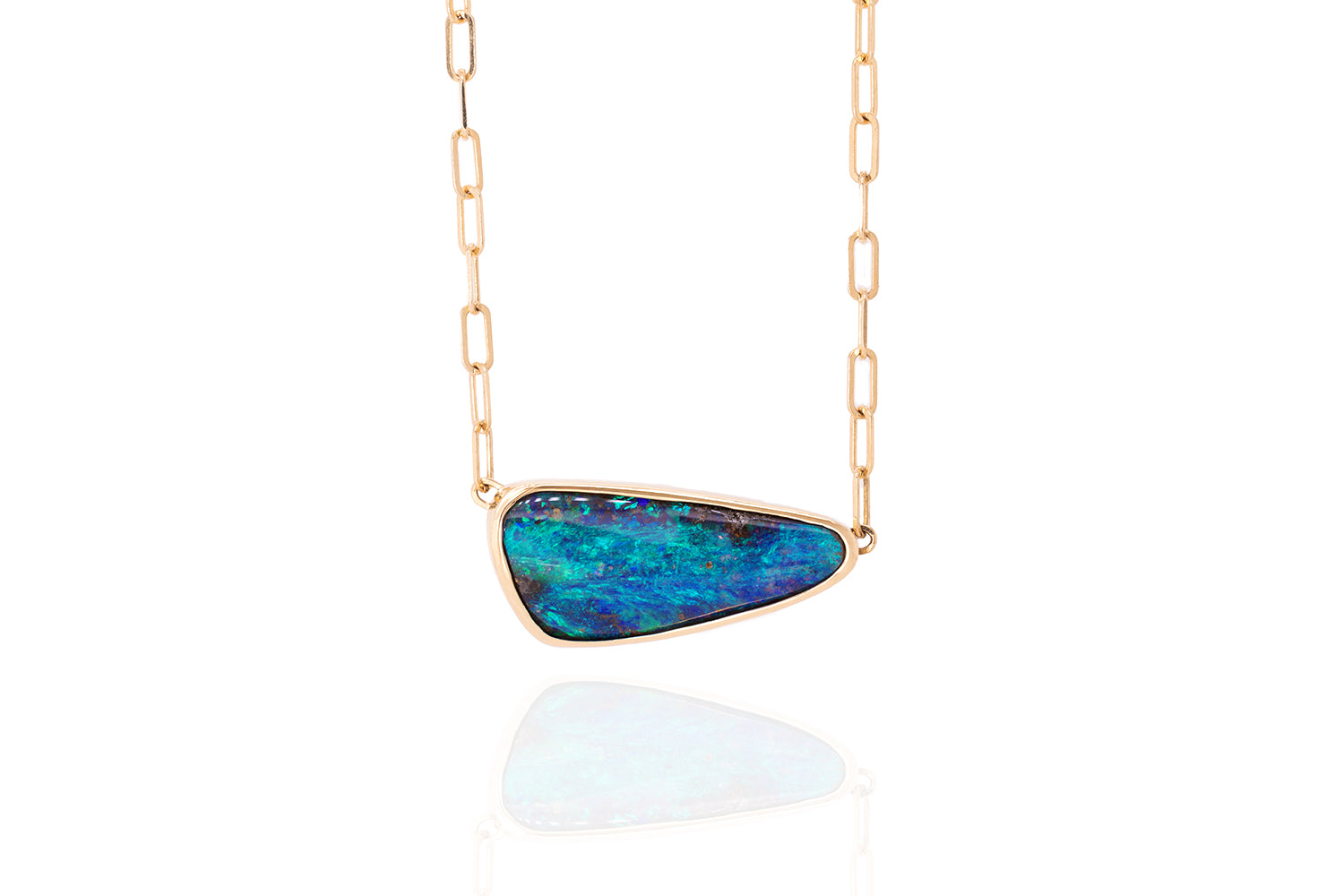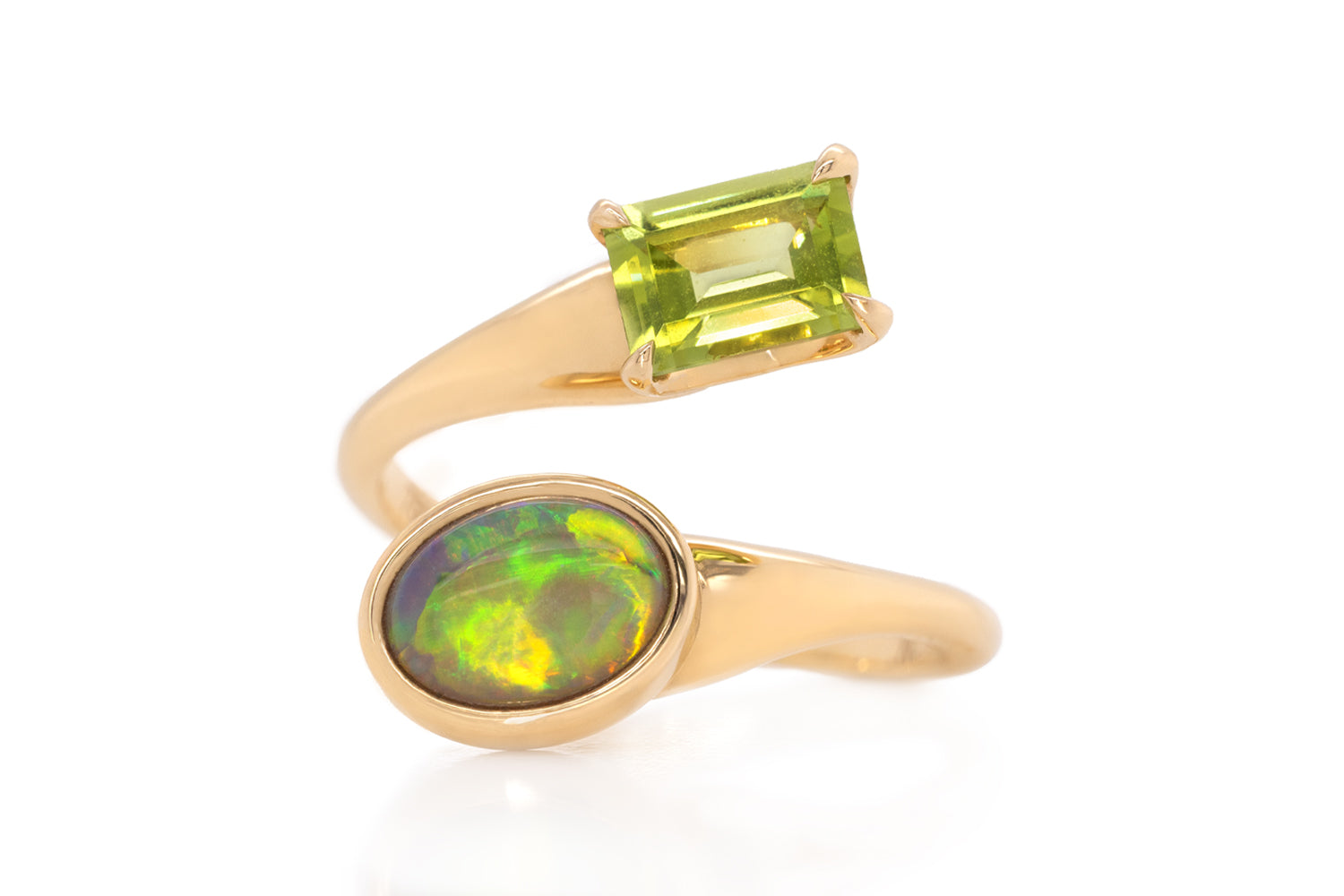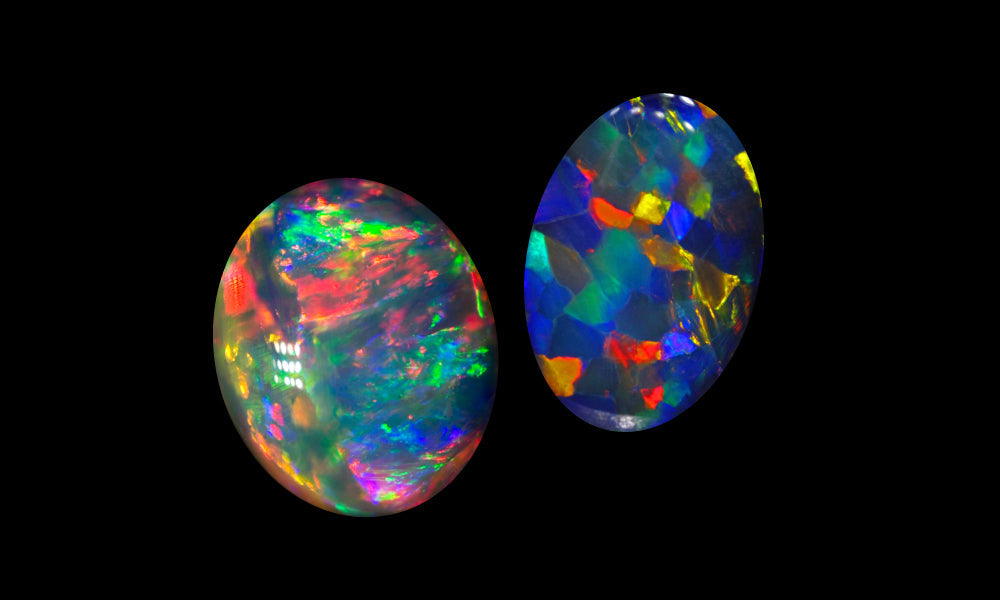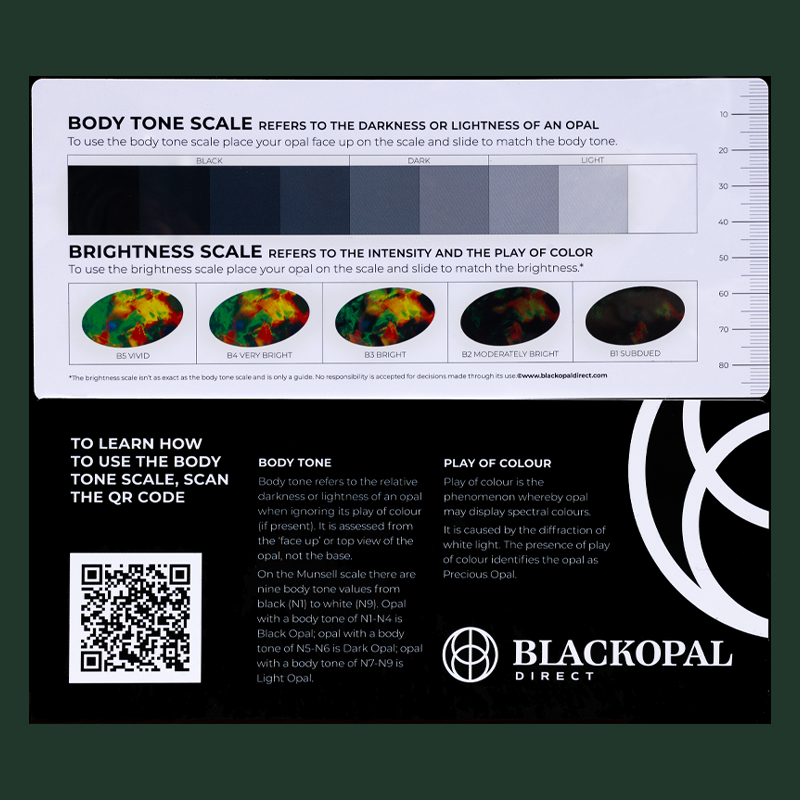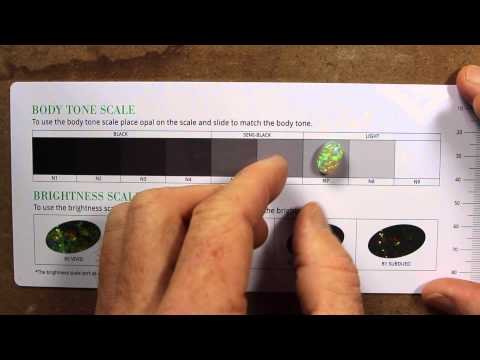When you work closely with opal for over 30 years, you can sometimes forget how important the most obvious questions are!
In this video, I help you understand what black opal is and why it is so valuable.
What Makes a Black Opal Black?
If you're new to the world of opals, you might be surprised to learn that black opal isn’t entirely black. In fact, black opals often display an intense play of color—vivid blues, reds, greens, and purples dancing across the surface. So why are they called black opals? The answer lies in the body tone.
What Is Body Tone in Opal?
The body tone of an opal refers to its underlying shade—the base color you see beneath the opal’s play of color. For black opal, this base often comes from a natural backing called potch, which is also called common opal.
What Qualifies as a True Black Opal?
For an opal to be considered a true black opal, it must have a natural black potch backing beneath the color bar. This potch is what gives the gem its deep body tone and helps amplify the brilliance of the color on top.
However, there are always exceptions—welcome to the world of opals!
What About Black Crystal Opals?
Black crystal opals break the rules a little. Unlike true black opals, they don’t need a potch backing. Instead, their naturally dark, translucent body tone gives them a smoky, tinted appearance—similar to the effect of window tinting on a car. This subtle darkness allows colors to pop, all without the need for a solid backing.
What makes Australian black opals so valuable?
Australian black opal from Lightning Ridge is valuable because it is the source of 95% of the black opal in the world. Australian opal is sedimentary, meaning it is formed in the earth, unlike black opal from elsewhere which is volcanic. Volcanic black opal is considered less stable than sedimentary opal and more likely to crack.
The Guide We Use to Classify Our Opal
Read more

We are proud to now offer all customers purchasing opal the addition of an independent valuation. An independent valuation provides you with peace of mind that you are purchasing a natural opal. Th...

Opal doublets are a fantastic way to achieve a great looking black opal at a fraction of a solid price. They are a great choice for many of us when looking for a champagne taste opal on a beer budg...

